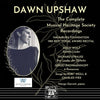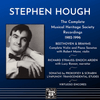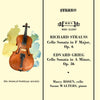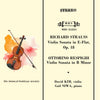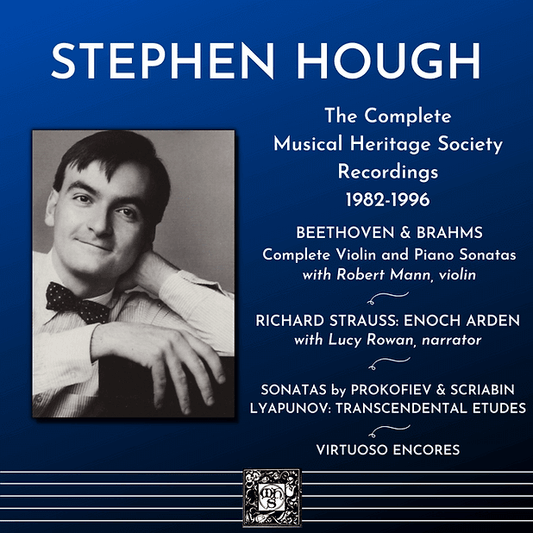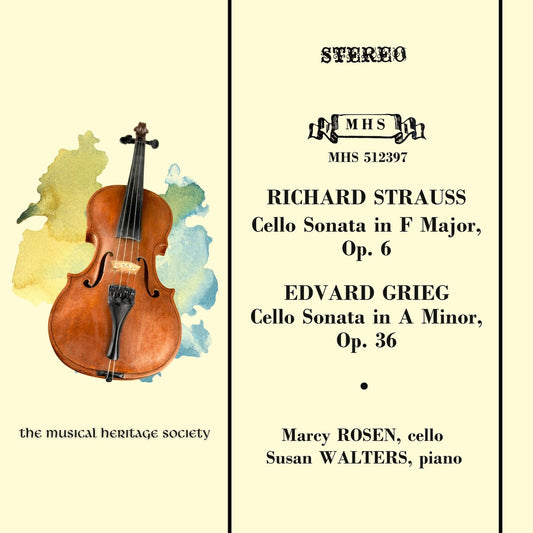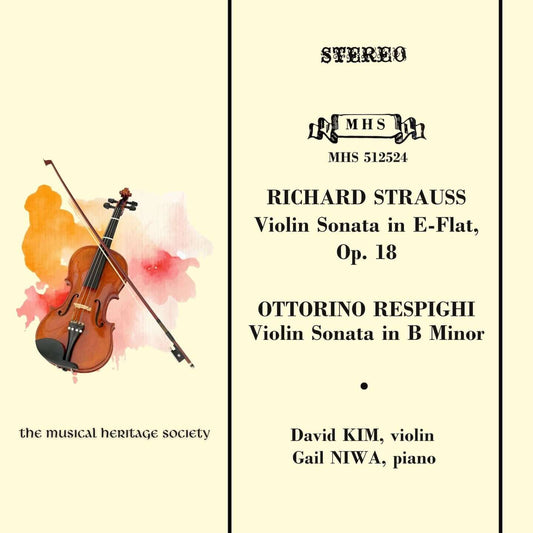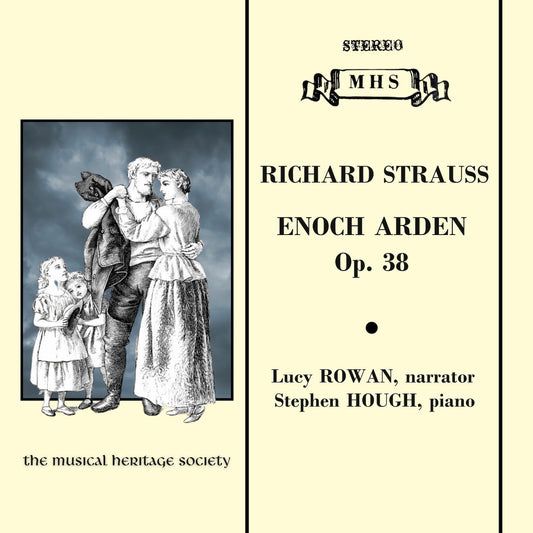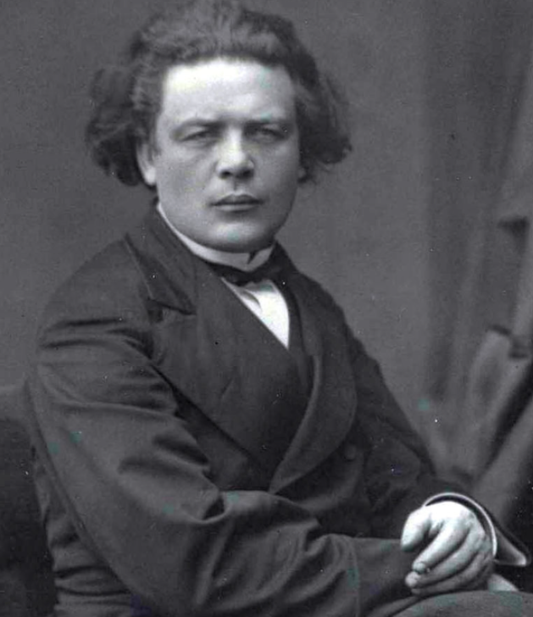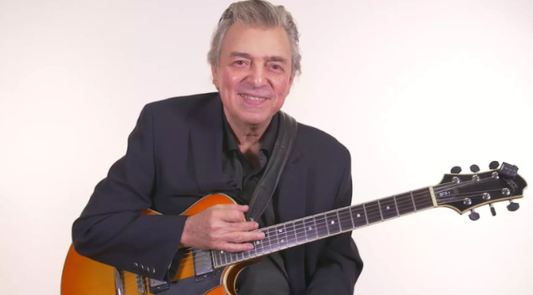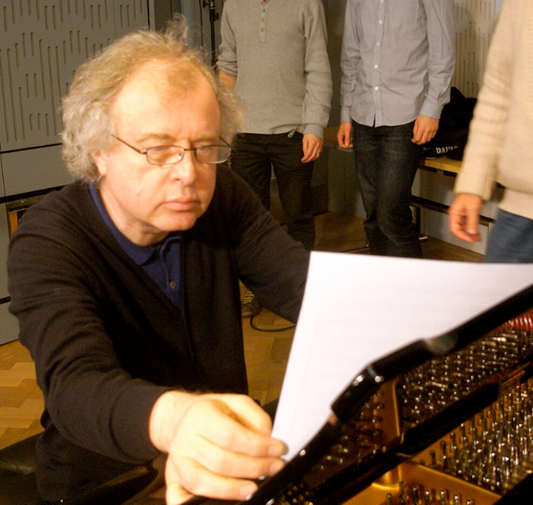Collection: RICHARD STRAUSS (1864-1949)
Richard Georg Strauss (1864-1949) stands as a commanding figure bridging the late Romantic and early modern periods in German music. Renowned as both a composer of extraordinary orchestral mastery and a highly accomplished conductor, Strauss left an indelible mark through his vividly descriptive tone poems and a series of complex, psychologically rich operas that pushed the boundaries of the genre.
Born in Munich, Strauss grew up in a highly musical household. His father, Franz Strauss, was the principal horn player at the Munich Court Opera and, though musically conservative (disliking Wagner intensely), ensured Richard received a thorough musical education from a young age. A prodigy, Strauss began composing at age six and produced a steady stream of works throughout his youth, initially influenced by the Classical and early Romantic masters his father favored, like Mozart, Beethoven, and Mendelssohn.
A crucial shift occurred in his early twenties under the influence of Alexander Ritter, a composer and violinist married to Wagner's niece. Ritter persuaded Strauss to abandon conservative forms and embrace the more progressive, programmatic ideals of Liszt and Wagner. This led to the composition of the works that first cemented his international reputation: a series of brilliant and audacious orchestral tone poems. Starting with Aus Italien (1886) and rapidly followed by masterpieces like Don Juan (1888), Tod und Verklärung (Death and Transfiguration, 1889), Till Eulenspiegels lustige Streiche (Till Eulenspiegel's Merry Pranks, 1895), Also sprach Zarathustra (Thus Spoke Zarathustra, 1896), Don Quixote (1897), and Ein Heldenleben (A Hero's Life, 1898), Strauss demonstrated an unparalleled command of orchestration, using vast instrumental forces to create music of stunning color, dramatic power, and narrative detail. Later additions like Sinfonia Domestica (1903) and Eine Alpensinfonie (An Alpine Symphony, 1915) continued this trajectory.
Alongside his burgeoning composing career, Strauss established himself as a leading conductor, holding posts in Meiningen, Munich, Weimar, and Berlin, and later co-directing the Vienna State Opera. He was particularly renowned for his interpretations of Mozart, Wagner, and his own works.
After the turn of the century, Strauss increasingly turned his focus to opera. Following early attempts (Guntram, Feuersnot), he achieved sensational, if scandalous, success with Salome (1905), based on Oscar Wilde's play. Its exotic orchestration, dissonant harmonies, and shocking subject matter marked a high point of musical Expressionism. He pushed these boundaries even further with Elektra (1909), his first collaboration with the Austrian poet and playwright Hugo von Hofmannsthal. This intense, psychologically brutal work featured extreme dissonance and massive orchestral forces.
The partnership with Hofmannsthal proved one of the most fruitful in operatic history. Together, they produced a series of masterpieces that moved away from the stark modernism of Elektra. Der Rosenkavalier (The Knight of the Rose, 1911), a bittersweet comedy set in 18th-century Vienna, became an enormous popular success, blending sophisticated waltzes, Mozartean grace, and rich Romanticism. Their subsequent collaborations included Ariadne auf Naxos (1912/1916), Die Frau ohne Schatten (The Woman without a Shadow, 1919), Die ägyptische Helena (1928), and Arabella (1933). Their final joint project, the conversational opera Capriccio (1942), exploring the relationship between words and music, was completed after Hofmannsthal's death.
Strauss's relationship with the Nazi regime remains a complex and controversial aspect of his life. In 1933, he was appointed president of the Reichsmusikkammer (Reich Music Chamber) by Joseph Goebbels. His motivations appear mixed – perhaps naive ambition, a desire to protect Jewish colleagues (including his daughter-in-law Alice) and friends, or a belief he could positively influence cultural policy. However, his collaboration lent prestige to the regime. He was forced to resign in 1935 after the Gestapo intercepted a letter to his Jewish librettist Stefan Zweig critical of Nazi racial policies. He remained in Germany during the war, navigating a precarious position.
After World War II, Strauss underwent a denazification process and was eventually cleared. In his final years, he experienced a remarkable late surge of creativity, often referred to as his "Indian summer." This period produced works marked by poignant reflection and luminous beauty, including the Metamorphosen for 23 solo strings (a lament for Germany's destruction), the lyrical Oboe Concerto, the Second Horn Concerto, and his sublime farewell to music and life, the Vier letzte Lieder (Four Last Songs, 1948) for soprano and orchestra.
Richard Strauss died in Garmisch-Partenkirchen in 1949. He left behind a legacy as a supreme master of the orchestra, a composer who revitalized the tone poem, pushed opera into daring new territory, and ultimately returned to a deeply personal, transcendent lyricism. His finest works remain staples of the concert hall and opera house worldwide.

